Buenos Aires is one of the best cities in South America to base yourself as a digital nomad.
Buenos Aires is a massive, metropolitan city. It’s an obvious choice for travelers thanks to a constantly improving food scene, an engaged and active expat community, and easy visa requirements.
The main draw for most digital nomads in Buenos Aires is the strength of the dollar. It’s easy to make your money last in Argentina and coming here with your foreign salary is very attractive.
And yes, prices are rising in 2025. It may not be the bargain basement destination backpackers bragged about a couple of years ago, but it’s still convenient for digital nomads in Argentina.
This is the ultimate guide for digital nomads in Buenos Aires with all the logistics you need to know.
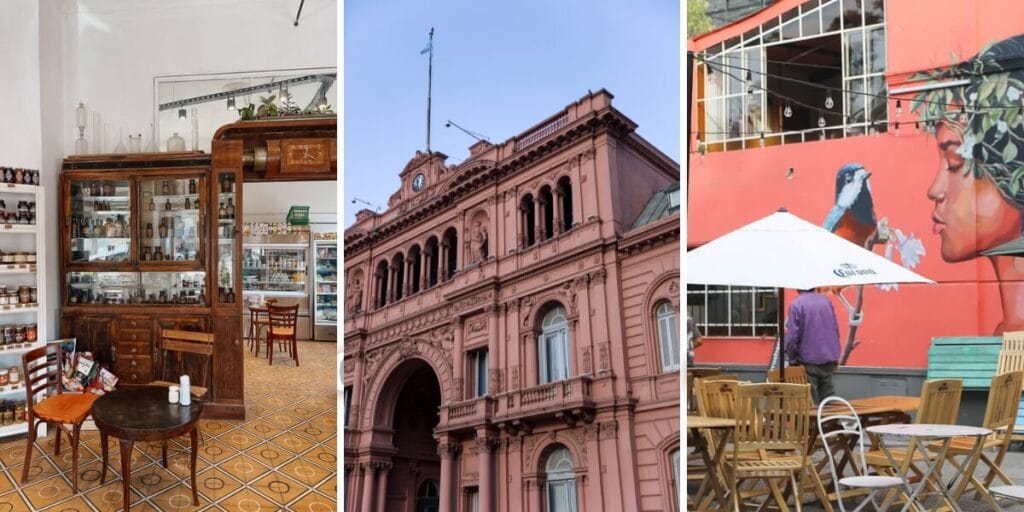
QUICK NOTE: This post contains affiliate links and Sol Salute may receive a commission for purchases made through these links, at no extra cost to you.
Why choose Buenos Aires as a digital nomad?
Buenos Aires is a huge city.
To add some perspective, a third of the entire country’s population resides within greater Buenos Aires (city plus the surrounding suburbs).
The saying goes “Dios está en todas partes, pero atiende en Buenos Aires.”
God is everywhere, but he works in Buenos Aires is a poor translation (atiende would translate to sees patients/clients), but an accurate description.
If you want theater, cafes, new restaurants, nightlife, anything really… you’ll find it in Buenos Aires.
Also, and importantly, Buenos Aires is liberal and welcoming. While a lot of countries in Latin America are religious and conservative, Buenos Aires is a progressive and accepting city.
And finally, your dollar goes further in Argentina.
You may have heard Argentina is no longer the cheap destination it once was.
This is true.
If you’re reading articles where the author is raving about how they spent pennies to eat out and live large in Buenos Aires, they are probably out of date.
But if you’re coming with a steady salary in dollars, pounds, or euros you’re still going to live comfortably in Argentina.
While some things have gone up (dining out, shopping, etc.), others remain a bargain, think dental work and spa treatments. Come to Argentina with the right perspective, budgeting capabilities and a healthy dose of patience and you’ll live well here.
Enough of the why, let’s dive into the how…
Digital Nomad Visa in Argentina
Citizens of the U.S., Canada, the UK, Australia, and most European Union countries do not require a visa to enter Argentina.
Click here for a full list of countries to check whether you need a visa or not.
As a tourist you are allowed to stay in Argentina for 90 days. You can extend your tourist visa for another 90 days in Migraciones or, as most do, head to Uruguay for a day trip or weekend away to get a new stamp on the way back in.
You won’t get a stamp in your passport anymore, but you can check your status online here.
Argentina does have an official digital nomad visa available that allows you to be here for 180 days. I believe you can then extend this for another 180 days.
You can read about that here and begin the application process if you’d like.
My non-legally binding opinion is that unless you need the official visa for your employer, it will be infinitely easier to come on a tourist visa and avoid the bureaucracy.
I go into more detail on visa extensions and immigration in my guide to living in Buenos Aires.
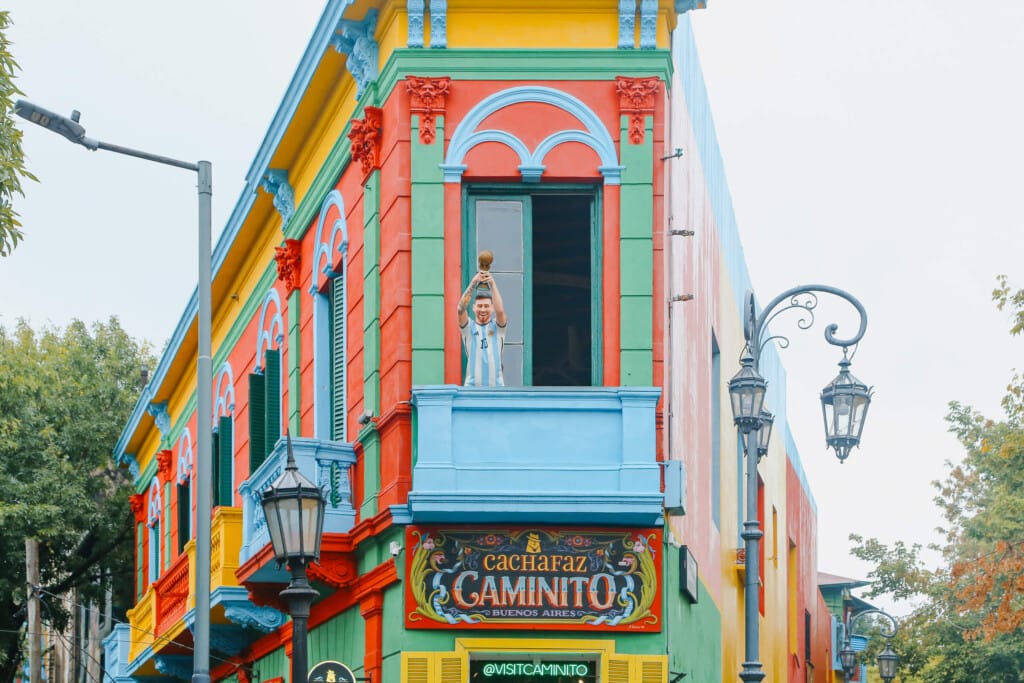
When to Come to Buenos Aires
When to come to Buenos Aires as a digital nomad?
Summers in Buenos Aires are hot and humid. This is a muggy city with mosquitos and sweltering afternoons from December through February.
The city is also noticeably empty after Christmas through February, bursting back to life in March when the school year starts. This may be a pro or a con for you. I love the city at it’s emptiest. It’s peaceful. But if you’re wanting to discover a vibrant and bustling Buenos Aires, you may prefer to wait until after summer.
Winters – from June through early September – are cold and dreary. The cold is mild, no snow here. But with cloudy days, Buenos Aires isn’t at her most beautiful in winter.
The best time to come? Spring and Fall. Spring (late September through early December) bring beautiful blooms, mild weather and lower humidity.
Fall – March through May – also brings mild weather and the benefits of a well-rested general public as everyone is returning refreshed and bright eyed after their beach front holiday over the summer.
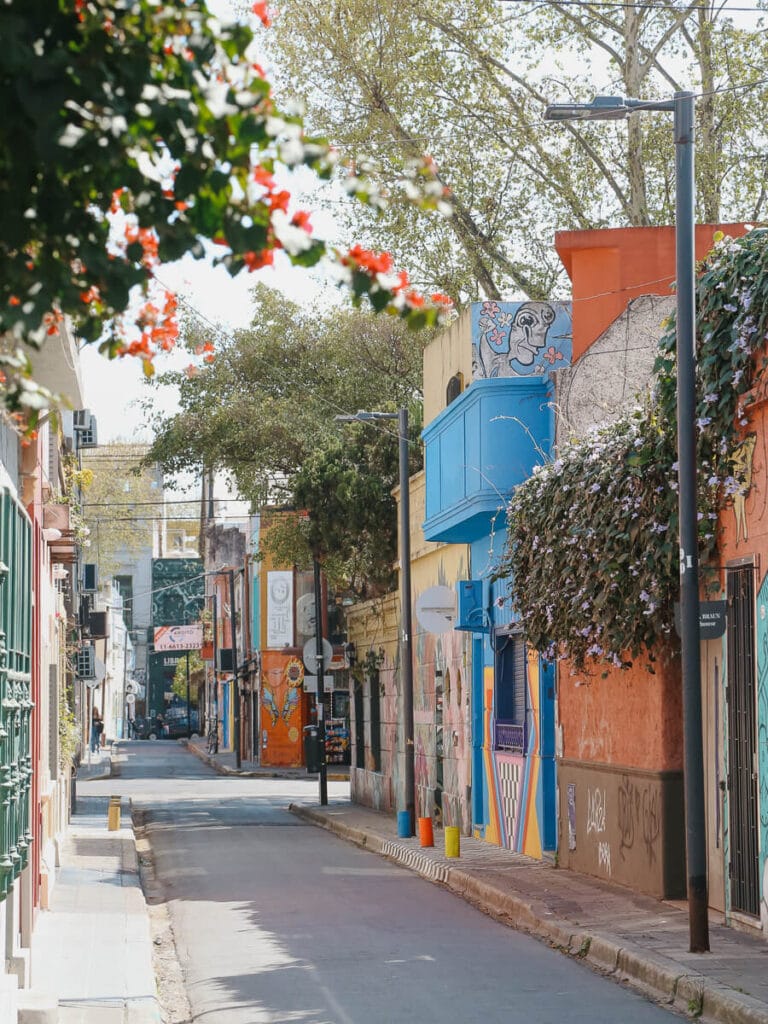
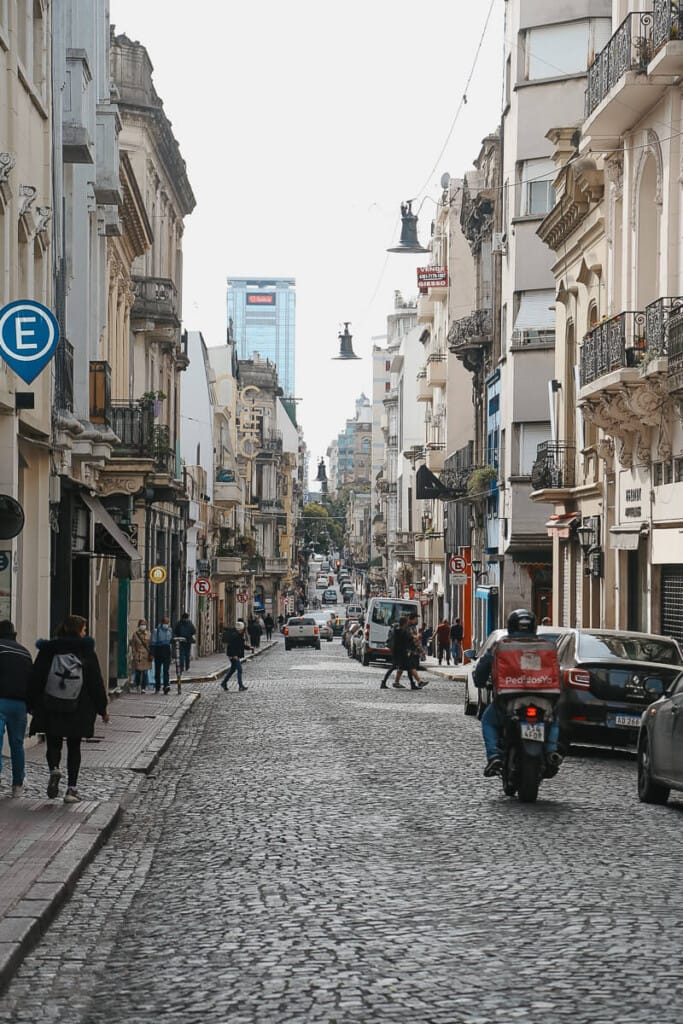
Where to stay in Buenos Aires as a Digital Nomad
I’ve written a really detailed article all about where to stay in Buenos Aires breaking down each neighborhood with its pros and cons.
So I won’t repeat myself here. But I will give a brief opinion on what barrios might interest you as a digital nomad, let’s go…
Palermo is the obvious choice, the power house. Palermo and it’s many mini barrios – Hollywood, Soho, Viejo, etc. – is where most foreigners base themselves. Palermo is bursting with cafes, nightlife, and is home to the city’s best parks. If you want to be close to other digital nomads, first consider Palermo.
Secondly, I would suggest San Telmo. Many expats live here, but it is more bohemian and historic. You can say “I don’t live in Palermo” with a certain level of disdain. I live in San Telmo, con el pueblo.
And, of course, there are a lot of residential neighborhoods to choose from to get off the foreigner path and live among the locals.
Nuñez is a favorite of mine, along with nearby Belgrano, Coghlan, and Saavedra. These are leafy green neighborhoods, with large sidewalks and beautiful parks. They have plenty of young cafes for working and you’ll be with the locals here. Find an apartment near the train or subte and you can be in Palermo or downtown within 15-20 minutes.
If you want to be walking distance from Palermo, check out Villa Crespo or Colegiales.
And if you want to be in the urban heart of things, with small sidewalks, great people watching, and all the busy of the city (which comes with its own specific charm) – look at Boedo or Almagro.
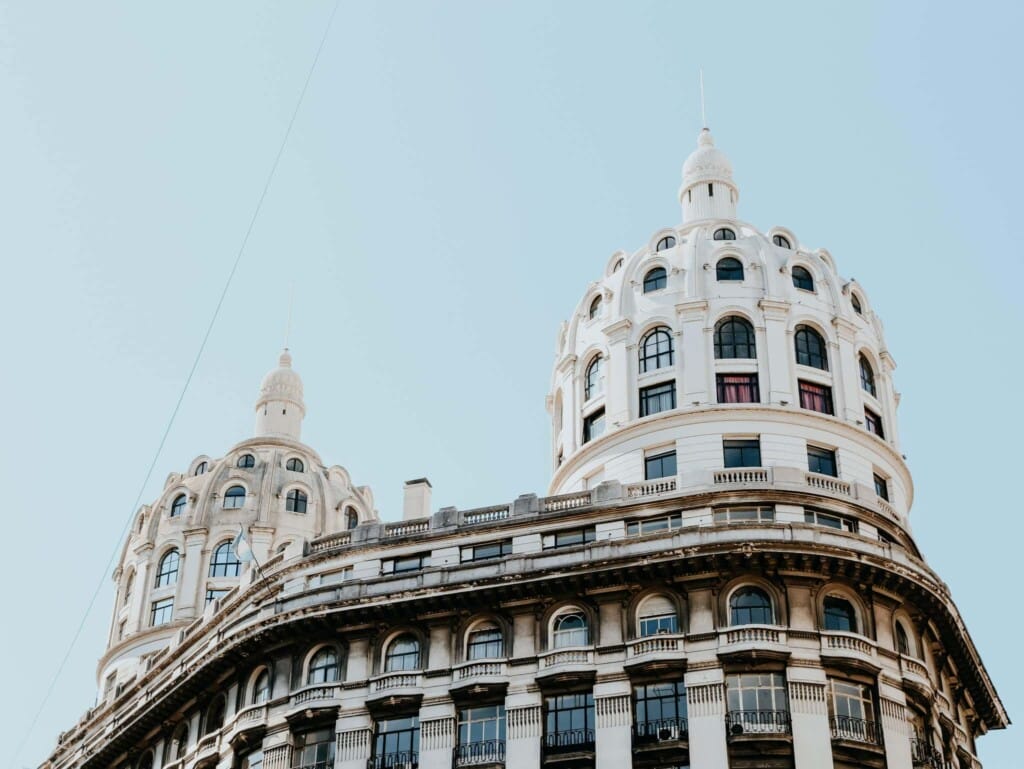
Co-Workings in Buenos Aires
With the boom of digital nomads in Argentina, you can bet there are plenty of co-workings to choose from if you need a proper office setting beyond the desk provided by your Airbnb.
- WeWork – WeWork has a few locations in Buenos Aires, I’m a fan of their Vicente Lopez location with its epic views of the river.
- La Maquinita Co. – La Maquinita has a large network of co-workings in Buenos Aires and even has locations in Cordoba and Rosario as well. They have a lot of amenities and are even pet friendly.
- Huerta – With 3 locations (2 in Palermo and one in Microcentro), Huerta really focuses on sustainability and community beyond working. They have private booths for you calls and Zoom meetings and beautiful terraces to relax. Huerta is also pet friendly.
- AreaTres – Located in Palermo on El Salvador, you can rent a professional fixed office, a desk, or a meeting room.
- Hit Coworking – Hit has formal and professional feel with a focus on start ups who need to rent a large office space, you can also rent one-off meeting rooms or a flexible office.
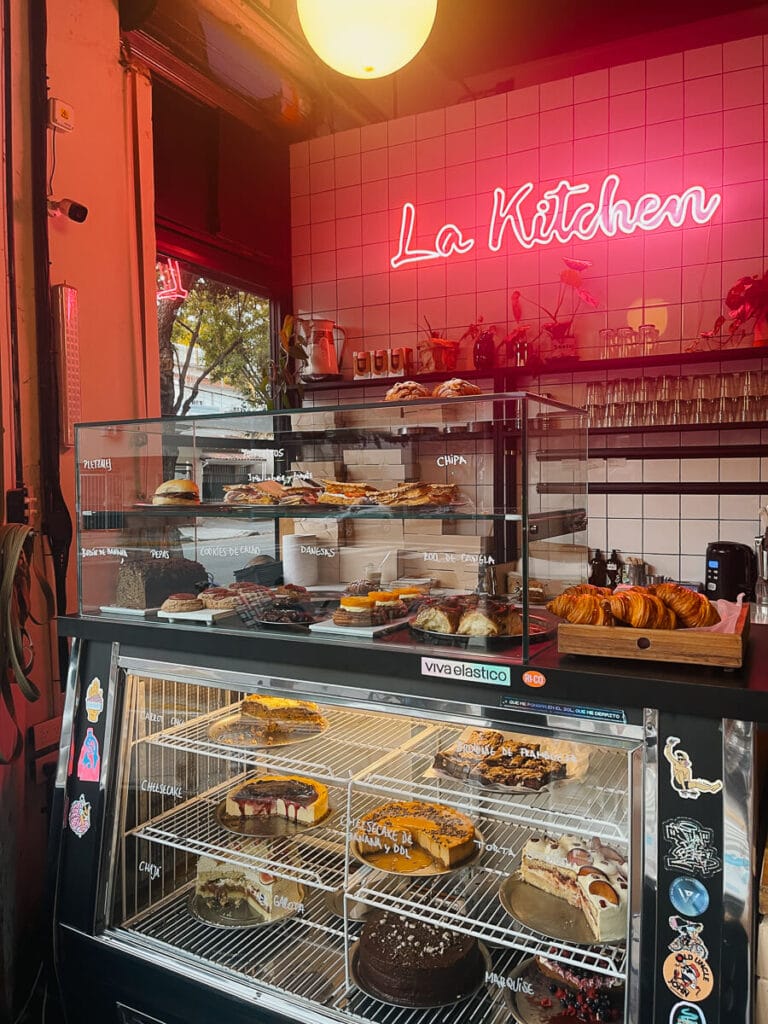
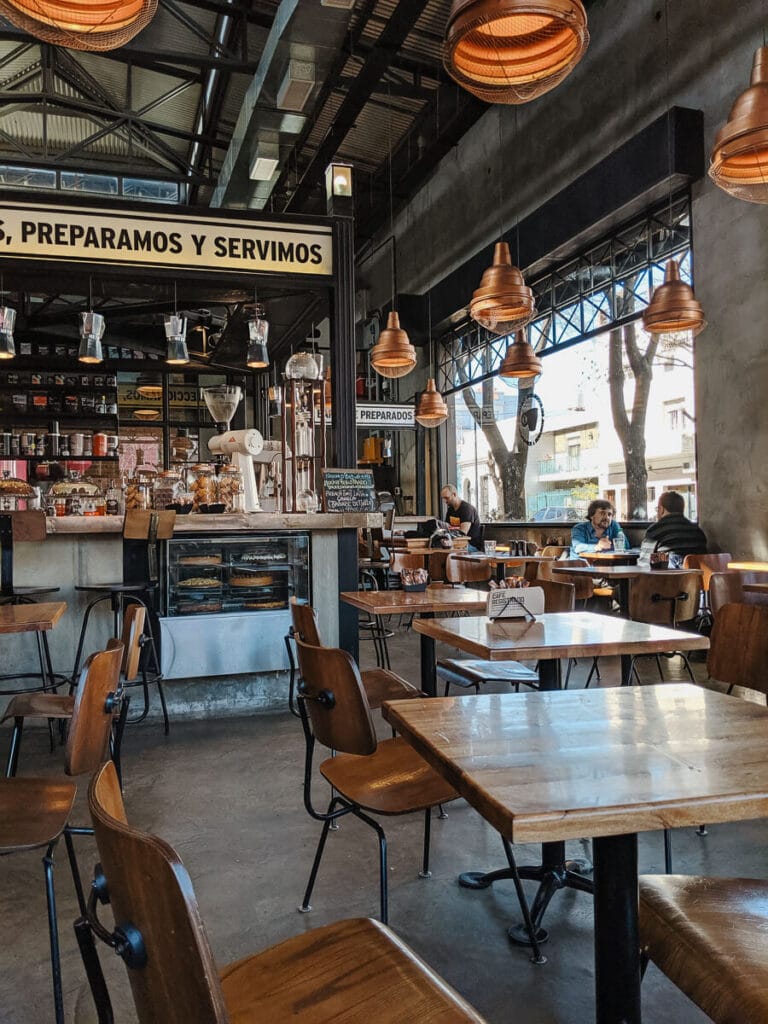
Cafes with Wifi
With the huge and seemingly never ending trend of “cafes de especialidad” in Buenos Aires, this list should be taken as a loose guide.
These are cafes I like, but it is far from the end all, be all list.
You’ll probably have one (or five) respectable cafes just a stone’s throw from your apartment.
All will have wifi, all will have coffee (quality will vary).
None will expect you to leave. Nurse that coffee for hours while you write your thesis. Make yourself at home.
Here are some tried and true cafes I love:
- Cuervo – The original cafe de especialidad in Buenos Aires, they were one of the first and remain one of the best. They make great coffee and are also improving their pastry game. You can’t go wrong with Cuervo, check their IG bio for a list of their locations (at the moment up to four across Palermo & Chacarita).
- La Kitchen – The original location in Saavedra has been my go to cafe to work from, their pastries are impeccable, wi-fi reliable, and clientele young and too hip for me.
- Café Registrado – With great coffee, Café Registrado is a great option for the digital nomad. I can’t speak for their now many locations on space, I love their OG location in Palermo Hollywood. They have since grown immensely, check their Google Maps for photos of the space in advance to see if the location near you has space.
- Libros del Pasaje – I love this cozy cafe at the back of a Palermo Soho bookstore.
- Cosecha – My go to Cosecha is on the park in Saavedra, but they have locations elsewhere, like San Telmo. I love their generous avocado and hummus toasts. They also have an affordable lunch menu and great wifi.
- Las Flores – Want to work outdoors? Check out Las Flores’ beautiful inner courtyard, home to more than 100 native plants and flowers. Bonus: the entire menu is gluten free.
- Malvon – Originally a classic spot in Villa Crespo, they now have four locations
Tip from me to you: I recommend connecting to their Wi-Fi first and making sure it’s working before you order and commit to a cafe. Many a time I’ve ordered my expensive flat white and masa madre medialuna only to find out their Wi-Fi never works.

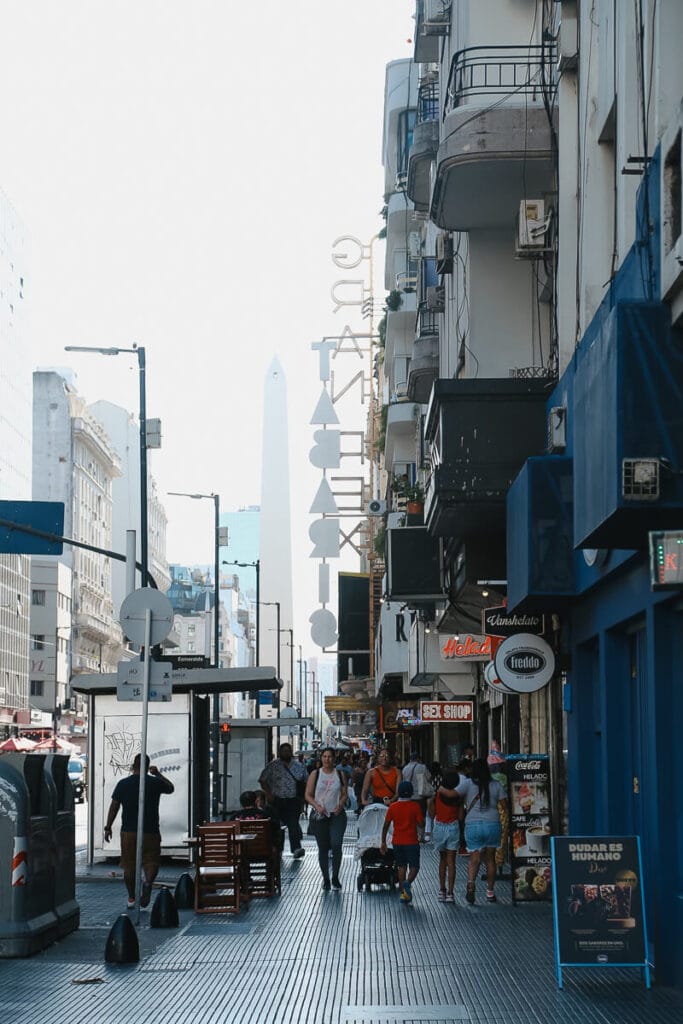
Quick Tips for Relocating to Buenos Aires
I have a very detailed post dedicated to moving to Buenos Aires. It has everything you could ever want to know about immigration, cost of living, apartment hunting and even where to grocery shop, read it here.
But here are a few tips to help you relocate smoothly:
- Bring all the electronics you could possibly need. Things like that cost significantly more here and some things can be hard to find.
- On a related note, bring all the clothes you made need. For example, if you’ll be hiking in Patagonia, bring your gear. Anything imported is very expensive here.
- For more read this vacation Argentina packing list and this Argentina moving here packing list.
- Get a data plan. Get an eSIM like Airolo to use while you get settled, then go to Claro for this tourist plan for the rest of your stay.
- Is Buenos Aires safe? Yes, it has issues with petty theft (be careful with your phone in the street), but overall this is a very safe city as long as you the same basic precautions as you would in any city. Read more: Is Buenos Aires safe?
- Be patient and have an open mind. If you’re coming from North America or the UK you may be used to a certain level of efficiency or punctuality that you just won’t find here. Have patience and go with the flow to set yourself up for success.
Argentina Travel Resources
- BOOK A CONSULTATION | I offer one-on-one travel consultations to help you plan your trip to Argentina. Pick my brain to get a local’s insight. Click here for more information.
- MY MAP | Buy my interactive map with 300+ pins to have access to the city as I see it. It is an invaluable resource. See more here about how it works.
- AIRPORT TRANSFERS | Having a driver waiting for you is ideal for a stress free arrival, Welcome Pickups is the best option for a driver from Ezeiza or Aeroparque.
- TRAVEL INSURANCE | Always travel insured. Anything can happen anywhere and it is scarier and costlier in an unfamiliar country. SafetyWing’s Essential Plan covers unexpected travel and medical emergencies and even offers add-ons like electronics theft or adventure sports. It is the best if you’re coming on vacation. If you’re coming as a digital nomad or an extended stay, you need their Complete Nomad Plan which also covers routine check ups, maternity, mental healthcare and more. Read more: Health Insurance in Argentina
- PHONE PLAN | These days, traveling with data is essential. Especially in Argentina where everything is managed on Instagram and WhatsApp. I recommend this E-SIM card. It’s hassle-free and affordable, for more read how to get an Argentina sim card.
- ACCOMMODATION IN ARGENTINA | booking.com is the most common hotel site used in Argentina and it’s where you’ll find the most options.
- RENTAL CARS | I love to travel Argentina via road trip, I’ve always used rentalcars.com, now they are operating under the umbrella of Booking.com’s car rental system.
- BUS TICKETS | Check Busbud for long distance bus routes and tickets.
- VPN | If you’ll be using a public WiFi connection and want to secure your data, I highly recommend using a VPN, I personally use and have had a good experience with ExpressVPN. I also use it to access Hulu and American Netflix from Argentina.
- FLIGHTS | Always check Google Flights and Skyscanner for flights to and within Argentina. Aerolineas Argentina is the local airline with the most routes. FlyBondi and Jetsmart are two budget airlines with dirt-cheap prices (but expect to pay for every add-on like luggage).
More Buenos Aires Resources
I hope this guide was helpful. Working remotely in Buenos Aires is really the ideal situation for becoming an expat here. It’s definitely made my life infinitely better.
If you’re planning your move to Argentina, check out my other resources:
- A Complete Guide to Living in Buenos Aires
- The Pros & Cons of Living in Argentina
- How to get your Argentine drivers license
- Lunfardo: A Lesson in Buenos Aires Slang
- How to Choose the Best International School in Buenos Aires (a must-read if you’re moving with children).
Pin it for later
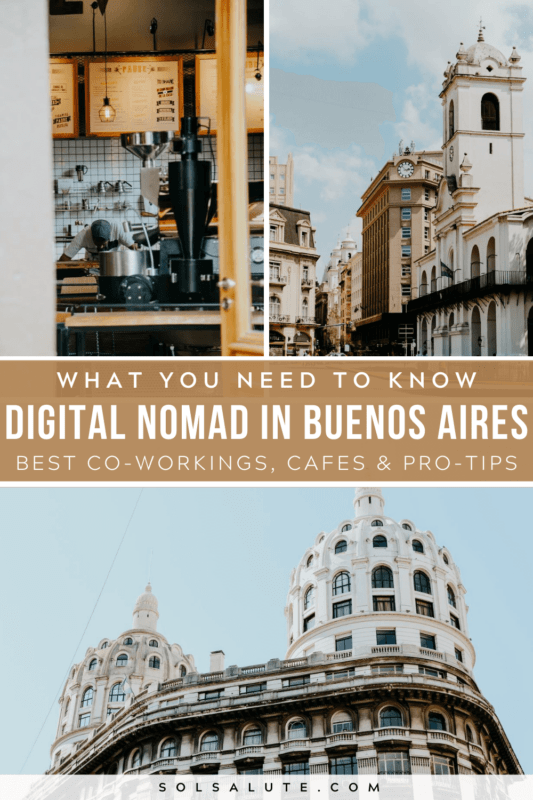



This is a great article to introduce people into considering Buenos Aires, Argentina as a base for digital nomading. A couple things that would be extremely helpful that weren’t covered are:
– What is the income tax situation and how the Argentinian government treats digital nomads, when your source of income is from out of country? (or even in-country)
– How to stay in Argentina for longer than your tourist visa or period, usually 90 days max, allows for… and how easy/difficult it is.
Maybe you could add to this post or write a part 2 to cover these key items 🙂
Thanks for your comment and suggestions.I have more information on immigration and living in Argentina here:
https://www.solsalute.com/blog/living-in-buenos-aires-move-to-argentina
Regarding taxes on income not earned in Argentina…my advice is when possible to not declare it as taxes are exorbitant. That is likely not the advice you’re looking for but it’s the advice most nearly everyone will give. Taxes here are extremely high and navigated creatively by locals, it’s something I avoid going into for a reason as I don’t want to give anyone bad advice on something that will differ greatly for every situation.